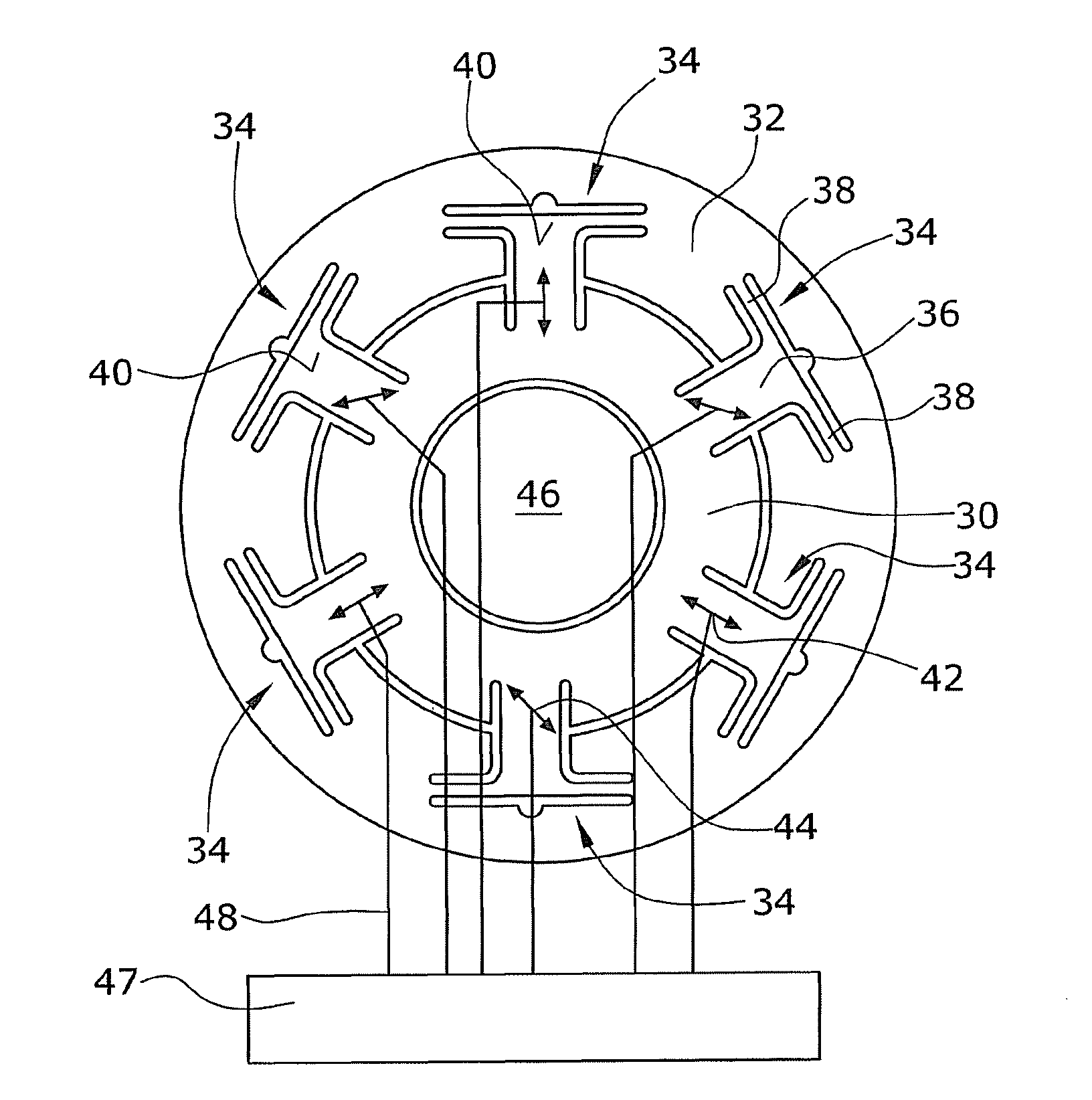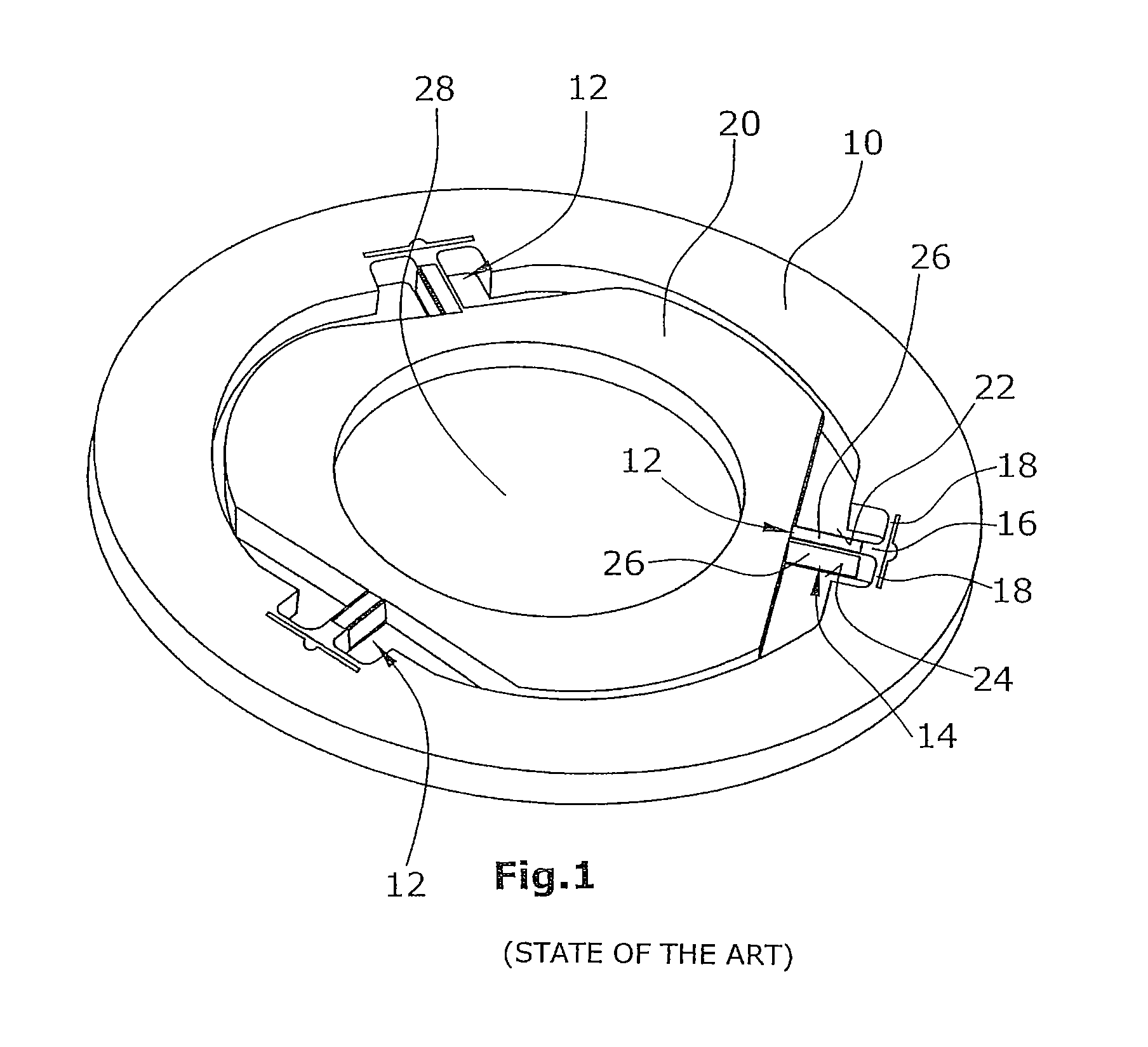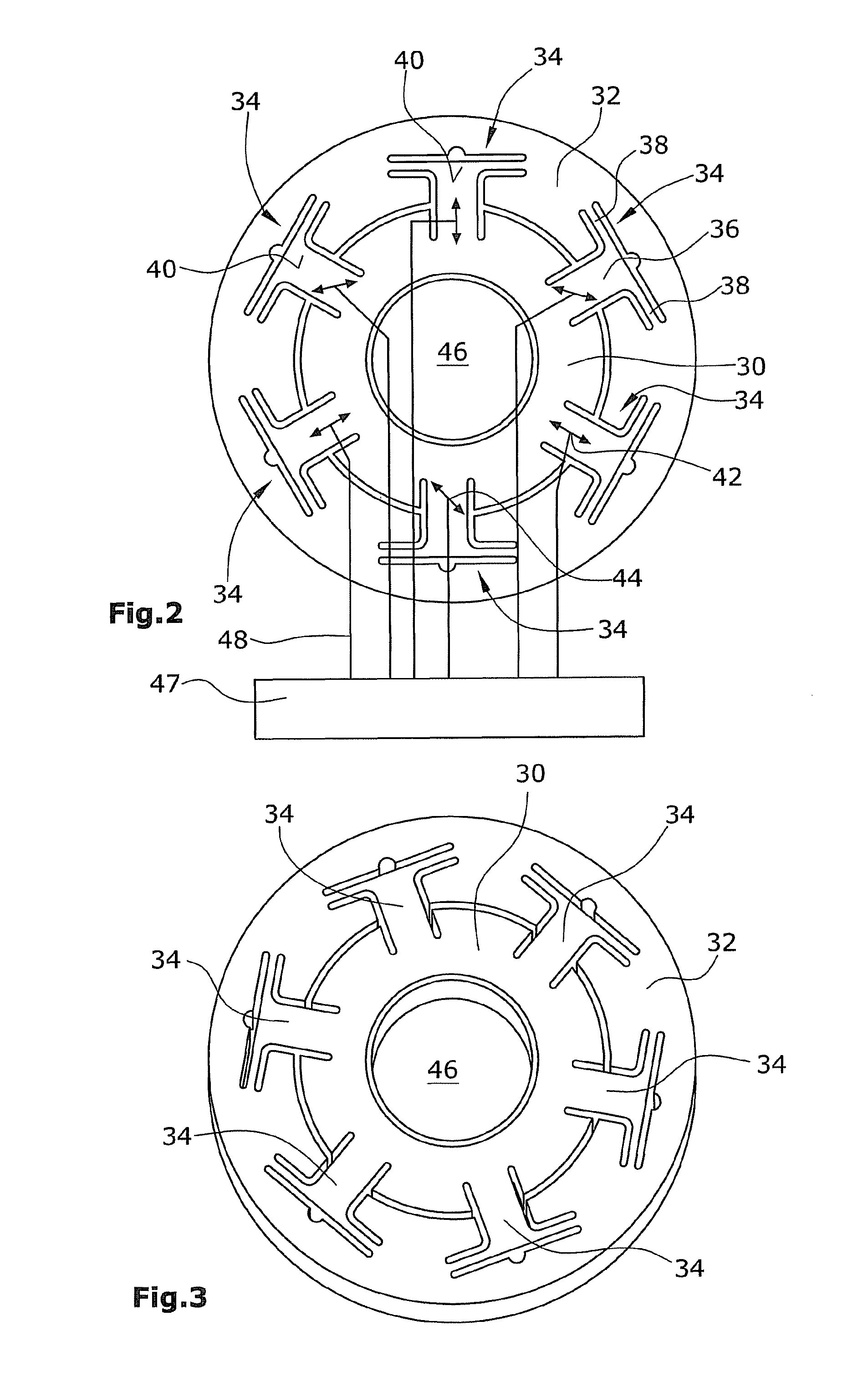Force/moment sensor for measurement of forces and moments
a force/moment sensor and moment sensor technology, applied in the field of force/moment sensors, can solve the problems of inability to miniaturize such a force/moment sensor to an outer diameter of less than 20 mm, inability to manufacture as a monolithic component, and inability to meet the requirements of measurement accuracy, etc., to achieve accurate orientation of individual deformation transducers relative to each other, and accurate arrangement of deformation transducers
- Summary
- Abstract
- Description
- Claims
- Application Information
AI Technical Summary
Benefits of technology
Problems solved by technology
Method used
Image
Examples
Embodiment Construction
[0026]The force / moment sensor according to the invention (FIGS. 2 and 3) comprises, in its illustrated preferred embodiment, a substantially circular inner holding element 30 which is surrounded by an outer holding element 32 being also substantially circular. The two holding elements 30,32 are connected to each other via six deformation elements 34 arranged with a regular distribution on the periphery of the inner holding element 30. When seen in plan view, the individual deformation elements 34 (FIG. 2) are T-shaped. The identically shaped deformation elements 34 comprise a deformation bar 36 and two connection webs 38 connected to deformation bar 36. Relative to the circular inner holding element 30, deformation bar 36 is arranged radially, with the two connection webs 38 extending tangentially. On its inward end, the deformation bar 36 is connected to the inner holding element 30. The two connection webs 38 are by their outer ends connected to the outer holding element 32.
[0027]...
PUM
| Property | Measurement | Unit |
|---|---|---|
| outer diameter | aaaaa | aaaaa |
| outer diameter | aaaaa | aaaaa |
| diameter | aaaaa | aaaaa |
Abstract
Description
Claims
Application Information
 Login to View More
Login to View More - R&D
- Intellectual Property
- Life Sciences
- Materials
- Tech Scout
- Unparalleled Data Quality
- Higher Quality Content
- 60% Fewer Hallucinations
Browse by: Latest US Patents, China's latest patents, Technical Efficacy Thesaurus, Application Domain, Technology Topic, Popular Technical Reports.
© 2025 PatSnap. All rights reserved.Legal|Privacy policy|Modern Slavery Act Transparency Statement|Sitemap|About US| Contact US: help@patsnap.com



